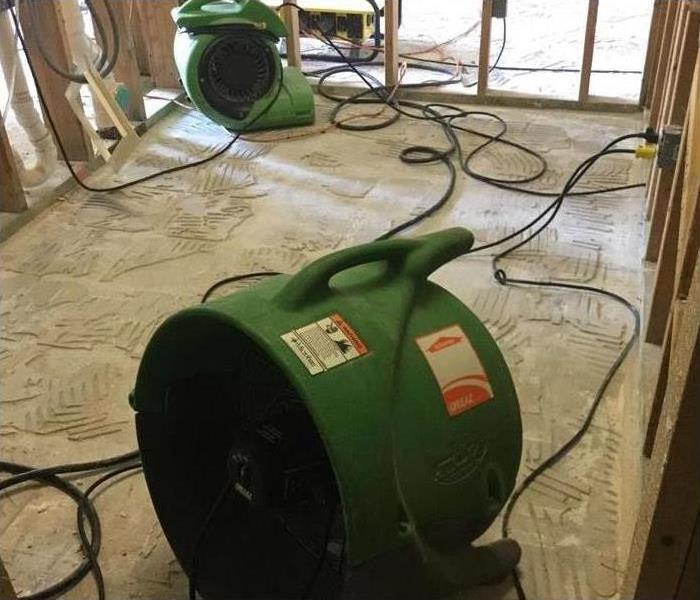We Have The Effective Drying Techniques In Franklin After A Flood
11/11/2019 (Permalink)
 After a flood all of the water was removed and SERVPRO placed drying equipment in several places on the floor in this property.
After a flood all of the water was removed and SERVPRO placed drying equipment in several places on the floor in this property.
Flood Damage to Masonry Walls of Franklin School Structures
Cinder blocks or concrete masonry units (CMU) are a common construction element to commercial structures like the schools in Franklin. With many of the interior and exterior walls getting constructed with this material, especially in new construction projects separate from the brick veneered main building, porous blockwork can allow for flood damage. With an annual rainfall average of over 50 inches of rain, preparing for instances of flash flooding and natural disasters is a sound strategy for school boards and property management.
The frequency of CMU use in commercial construction has made it necessary for our SERVPRO team to discover the best drying and restoration approaches for flood damage in Franklin schools. The interior face of these units often get painted, both to reduce the rough texture for those touching the wall and to improve aesthetic appeal. In a more practical sense, these paints chosen for the school also have vapor barrier properties designed to reduce moisture penetration.
Hydrostatic pressures are among the worst situations that a masonry wall faces, as weaker points like the mortar joints can succumb to the immense exterior force and allow water to flow into the building under the right circumstances. While our SERVPRO team has multiple extractors and drying tools to help address the standing water inside of the building, this is still insufficient to address all of the flood effects in the blockwork. Because of stored water in the blockwork, there is still more work to get done before students and faculty can return to this damaged region of the school.
Weep holes drilled into the bottom course of block in the mortar joints can alleviate collected flood damage in the individual cells of the CMUs. The drained water can get addressed with wet-vacs as it enters the building and dried sufficiently before resealing the openings in the joints in the bottom course. You can utilize these same weep holes for penetration of positive pressure systems like the Injecti-Dry unit to force heated air into these cavities to ensure they are dry before resealing up the interior and repairing any external damage that might exist.
Reducing loss and shortening relocation needs for your student body and faculty is vital during flooding situations. Our SERVPRO of Williamson County team can help with effective drying strategies for blockwork. Give us a call anytime at (615) 790-9634.
See more about Franklin.




 24/7 Emergency Service
24/7 Emergency Service